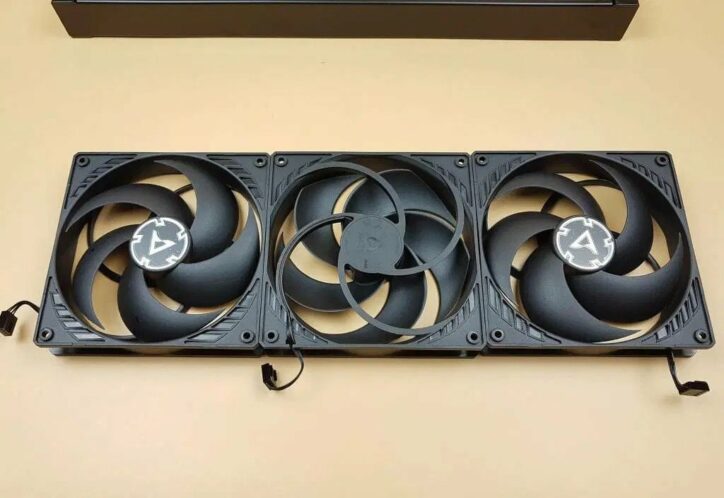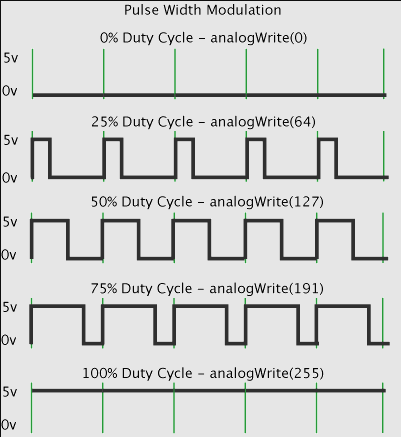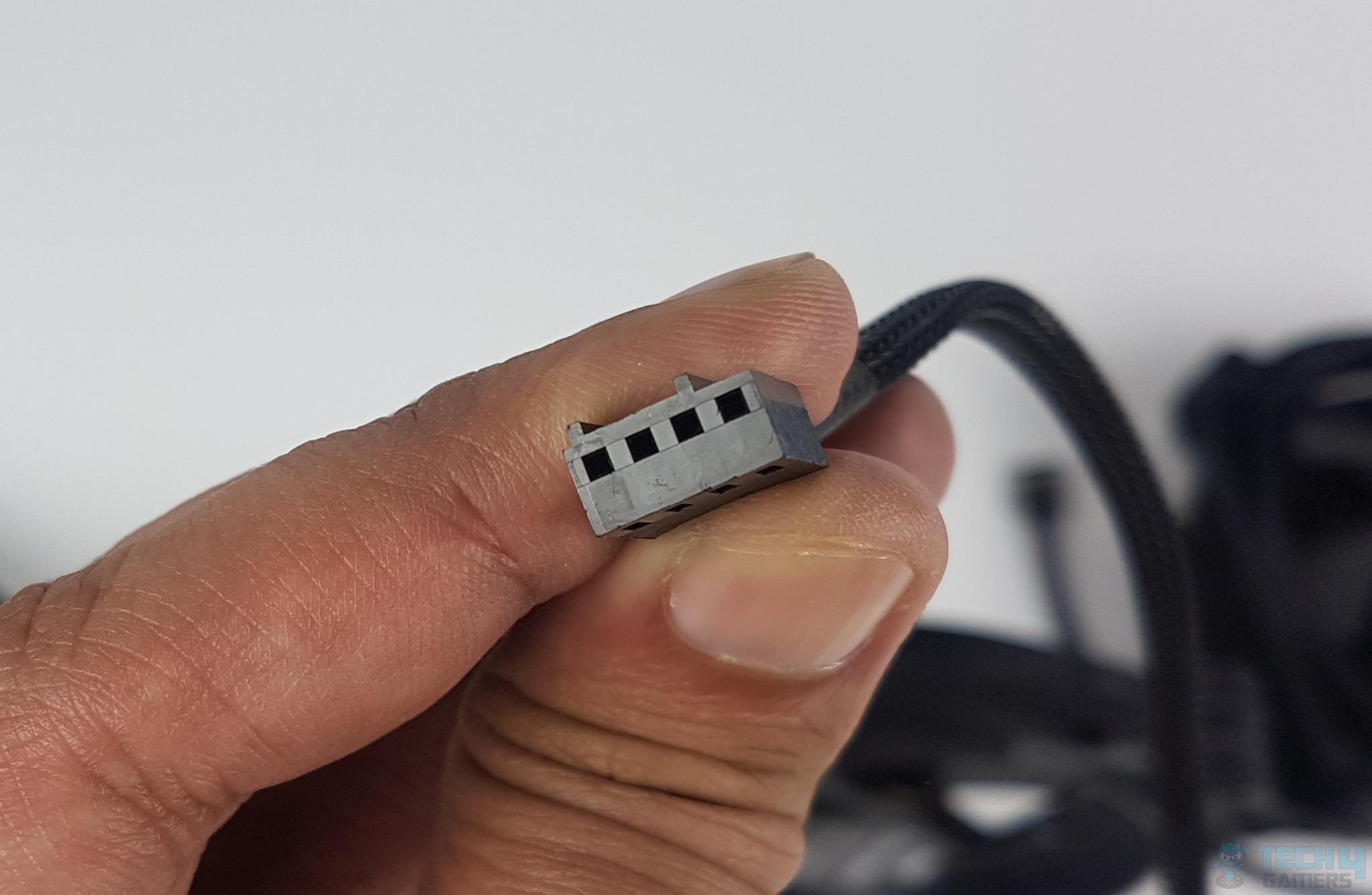In this modern era, it is important to be familiar with terminologies commonly used to define various PC components. You will be able to make an informed decision while building your PC if you are aware of such terms. A similar term is PWM or Pulse Width Modulation, used in various fields ranging from electronics to PC hardware. Throughout the article, I will try to equip you with the necessary knowledge of this term.
Key Takeaways
- PWM stands for Pulse Width Modulation. This technique dynamically regulates factors like fan speed and RGB lighting.
- PWM fans can change their speed dynamically per the required cooling load, surrounding temperature, and noise preferences.
- The working principle of this technique is to regulate the duty cycles. Higher duty cycles result in higher fan speeds, while lower duty cycles lead to slower speeds.
What Are PWM Fans?

PWM (Pulse Width Modulation) is integral to PC cooling systems. This is a technology that allows dynamic control over the fans, which is essentially a motor. The control is achieved by modulating the duration of the electrical signal’s “on” and “off” cycles through the alterations of its duty cycle [1].
These fans can adjust their speeds, unlike standard DC fans, depending on the temperature. During periods of low demand, the fans can run at lower speeds, resulting in reduced noise generation and power consumption. One drawback of these is that they cost more and require a good motherboard with a dedicated header [2].
How Does PWM Work?

Pulse Width Modulation essentially grants us control over the RPM of a fan. If a fan is capable of running at 3000 RPM, and we want it to run at its maximum speed, we will set the duty cycle to 100%. If we want to conserve power and make the fans run at half of their maximum speed, we will set the Duty Cycle to 50%. This will ensure that the fan runs only 50% of the time, bringing its speed down to 1500 RPM [3].
What Is A 4-pin PWM Connector?

A 4-pin PWM is a type of connector commonly used for connecting PWM fans to a power source, typically a motherboard or a fan controller, in PC hardware setups. It is placed on a 4-pin header commonly found on motherboards and it allows users to access PWM capabilities on their systems. [4].
Here’s a breakdown of the pins in this 4-pin connector[5]:
- Ground (GND): This pin provides the electrical ground connection, which serves as the reference point for the electrical circuit.
- +12V (VCC): This pin supplies the fan with a constant 12-volt power source, providing the energy needed to operate.
- Sense (S): This pin monitors the fan’s rotational speed, allowing the motherboard or controller to receive feedback about how fast the fan is spinning.
- PWM (P): This pin transmits the PWM signal. It carries the modulated signal that controls the fan’s speed by adjusting its duty cycle.
PWM Fan Vs. DC Fan
Here is a brief overlook of two commonly used PC fans:
| PWM Fan | DC Fan |
|---|---|
| Precise speed control through PWM signal, adjusting duty cycle for various speeds. | Limited speed control through voltage adjustments; often uses resistors or hardware switches. |
| A wide range of speeds is achievable, from very low to very high RPMs. | Limited speed range; may not achieve as high or as low speeds as PWM fans. |
| More efficient in terms of energy consumption and noise reduction at lower speeds. | Less efficient and might generate more noise at lower voltages due to reduced power. |
| Commonly compatible with PWM headers on motherboards and fan controllers. | It can connect to standard 3-pin fan headers on motherboards or fan controllers. |
| Can adjust fan speeds dynamically based on temperature changes for optimal cooling. | Limited to static speed settings based on voltage input. |
| Ideal for situations requiring precise speed control, quiet operation, and dynamic thermal management. | Suited for basic cooling needs where constant speed operation is acceptable. |
Final Words
Pulse Width Modulation, or PWM, is a dynamic technique that controls various aspects, such as fan speed and RGB lighting. With PWM fans, the ability to adjust their speed dynamically based on factors like cooling requirements, ambient temperature, and noise preferences is facilitated. This is achieved by modulating the duty cycles, wherein higher duty cycles prompt increased fan speeds, whereas lower duty cycles induce slower speeds.
Facilitating this process is a PWM controller, responsible for generating the requisite signal that is then transmitted to components like fans and RGBs. Moving on, the 4-pin PWM configuration integrates power supply and ground pins along with an additional pin dedicated solely to the PWM signal. In contrast to PWM fans, DC fans lack the capacity to dynamically regulate their speed and instead operate at fixed velocities.
Related Helpful Resources By Tech4Gamers:
References:
- Massachusetts Institute of Technology. Pulse-width modulation. Retrieved from: https://fab.cba.mit.edu/classes/961.04/topics/pwm.pdf
- PWM vs DC Case Fans: Noise, Performance, and Power. Retrieved from: https://www.linkedin.com/advice/3/what-pros-cons-pwm-dc-case-fans-terms-noise-performance
- Corsair. WHAT IS PWM AND HOW DOES IT RELATE TO PC FANS? Retrieved from: https://www.corsair.com/us/en/explorer/diy-builder/fans/what-is-pwm/
- Cadence Design Systems. What’s a 4-Pin PWM Header and How Does It Work? Retrieved from: https://resources.pcb.cadence.com/blog/2021-what-s-a-4-pin-pwm-header-and-how-does-it-work
-
All about circuits. Understanding PWM on a 4-pin fan. Retrieved from: https://forum.allaboutcircuits.com/threads/understanding-pwm-on-a-4-pin-fan.185394/
FAQs
Yes, these fans often offer better performances due to their dynamic abilities.
It is also known as Pulse Duration Modulation (PDM).
Thank you! Please share your positive feedback. 🔋
How could we improve this post? Please Help us. 😔
[Wiki Editor]
Ali Rashid Khan is an avid gamer, hardware enthusiast, photographer, and devoted litterateur with a period of experience spanning more than 14 years. Sporting a specialization with regards to the latest tech in flagship phones, gaming laptops, and top-of-the-line PCs, Ali is known for consistently presenting the most detailed objective perspective on all types of gaming products, ranging from the Best Motherboards, CPU Coolers, RAM kits, GPUs, and PSUs amongst numerous other peripherals. When he’s not busy writing, you’ll find Ali meddling with mechanical keyboards, indulging in vehicular racing, or professionally competing worldwide with fellow mind-sport athletes in Scrabble at an international level. Currently speaking, Ali has completed his A-Level GCEs with plans to go into either Allopathic Medicine or Business Studies, or who knows, perhaps a full-time dedicated technological journalist.
Get In Touch: alirashid@tech4gamers.com


 Threads
Threads
![Is A Laptop Considered A PC? [Explained] Is Laptop a PC](https://tech4gamers.com/wp-content/uploads/2022/09/Is-Laptop-a-PC-218x150.jpg)


![How Much Does A PC Weigh? [Gaming PC Weight] PC Weigh](https://tech4gamers.com/wp-content/uploads/2023/03/How-Much-Does-A-PC-Weigh-218x150.jpg)